Wood Library
There are hundreds of wood species to choose from when selecting wood for a project. From the mundane to the exotic, the choices are vast! Below we have catalogued some of the common woods that we have used in our projects, along with brief descriptions of each type.
-
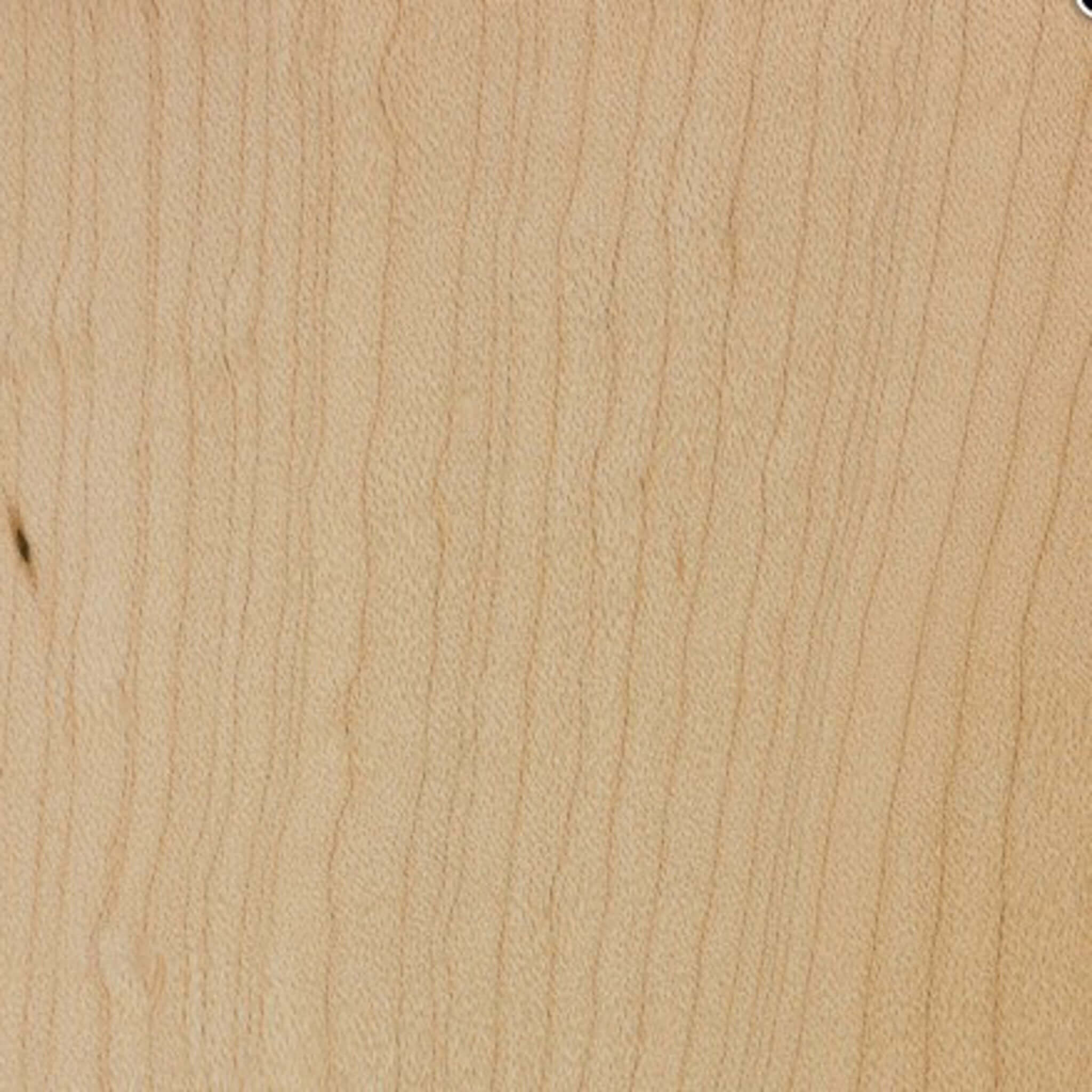
Maple
See Maple ProjectsMaple is a temperate hardwood with an even texture and straight grain pattern. It is normally a uniform pale color ranging from yellow to white. It has been used in American furniture since colonial days. It turns and polishes well.
- Region: North America
- Color: Pale yellow to white
- Temperate Hardwood
- Texture: Even
- Grain Pattern: Straight
-
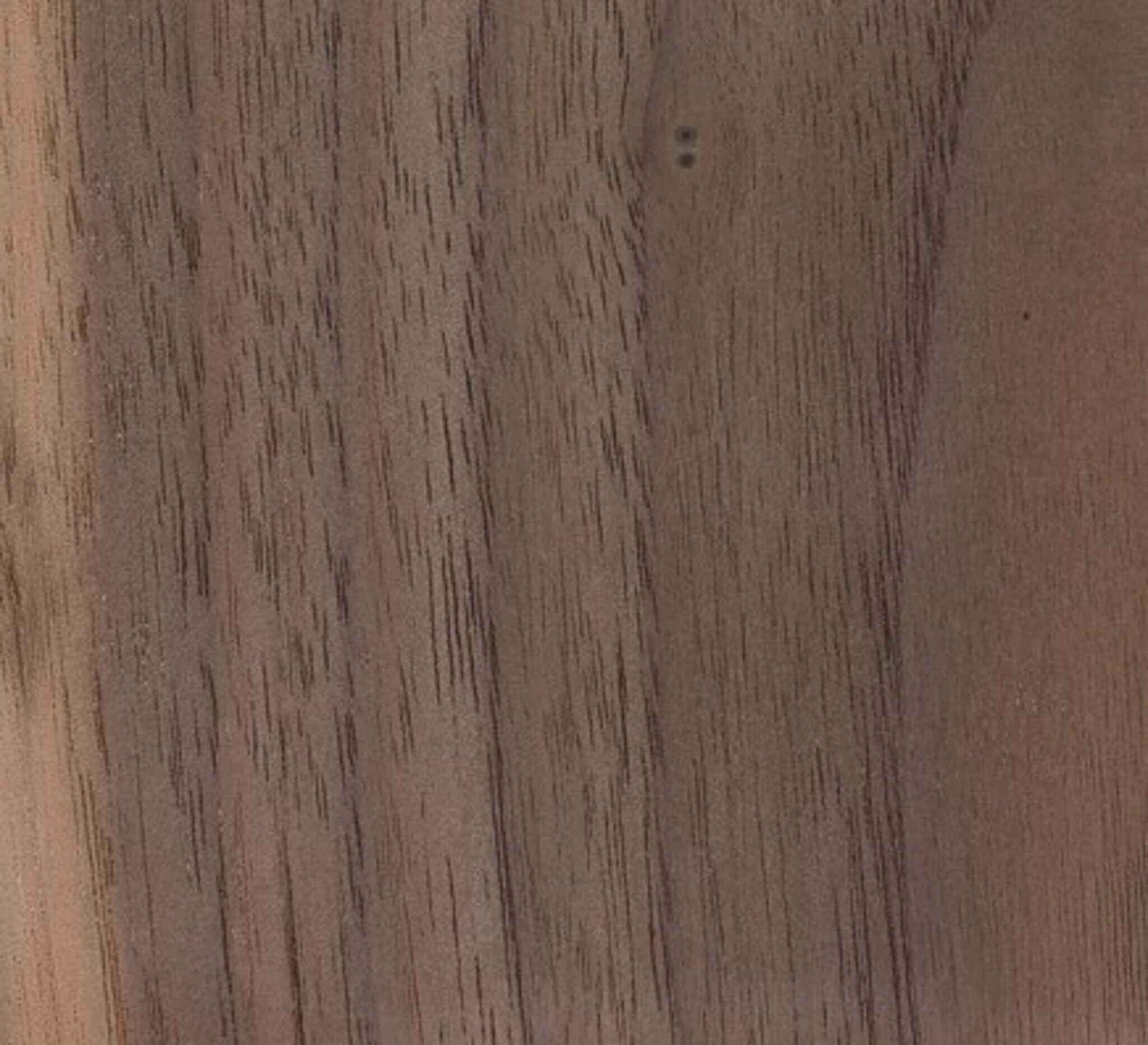
Walnut
See Walnut ProjectsA very popular choice for woodworking, walnut is a temperate hardwood with an even, slightly coarse grain pattern. It is normally a dark brown with lighter streaks. It turns and polishes very well. One of our favorites!
- Region: North America
- Color: Dark Brown with streaks
- Temperate Hardwood
- Texture: Even, slightly coarse
- Grain Pattern: Straight
-
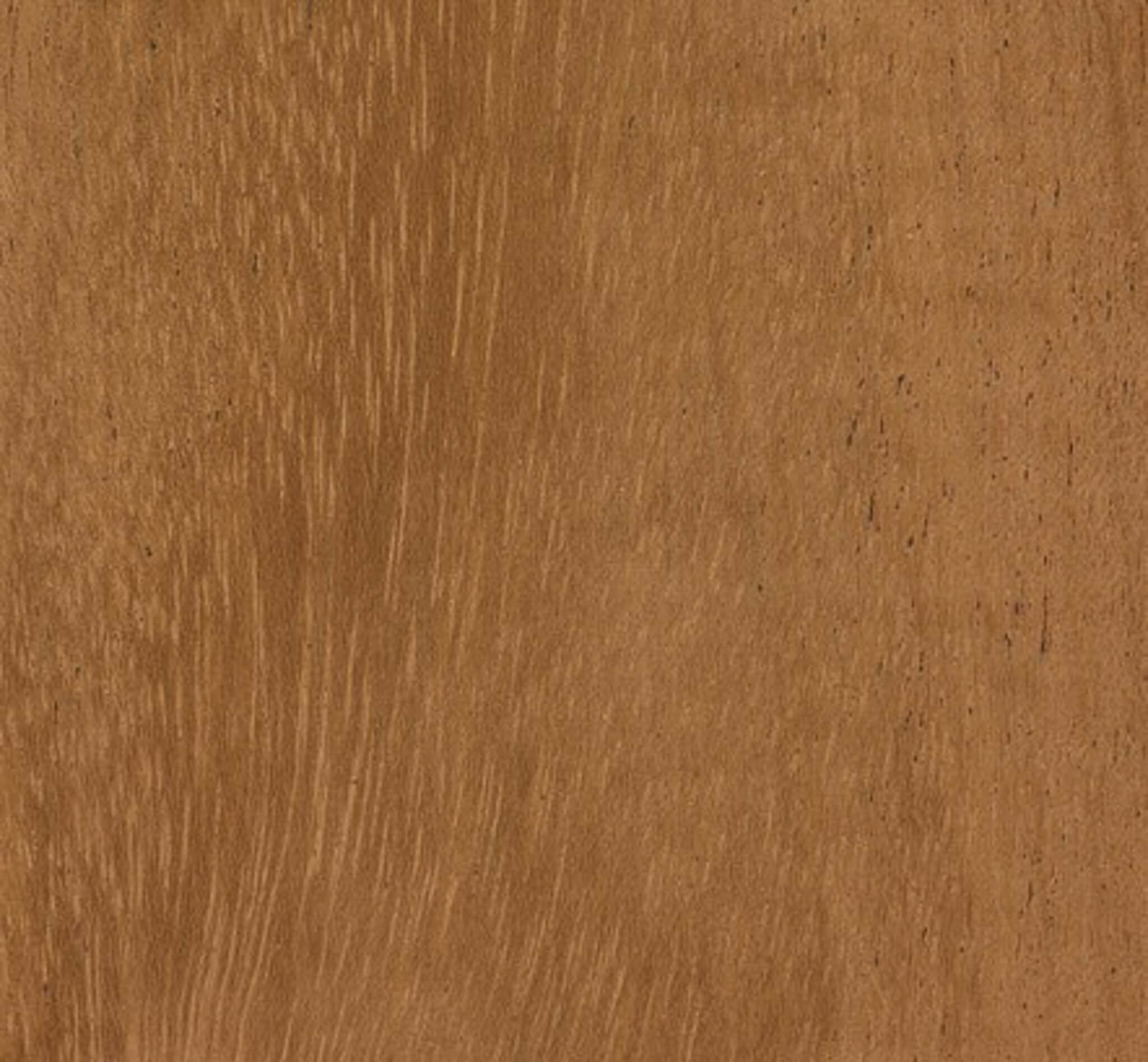
African Mahogany
See African Mahogany ProjectsAn exotic tropical hardwood with a deep, reddish brown color. The texture is coarse and uneven with an interlocking grain. When polished, it is almost irridescent, and is popular for inlays in projects such as guitars.
- Region: Central and East Africa
- Color: Reddish-brown
- Tropical Hardwood
- Texture: Coarse and uneven
- Grain Pattern: Straight interlocking
-
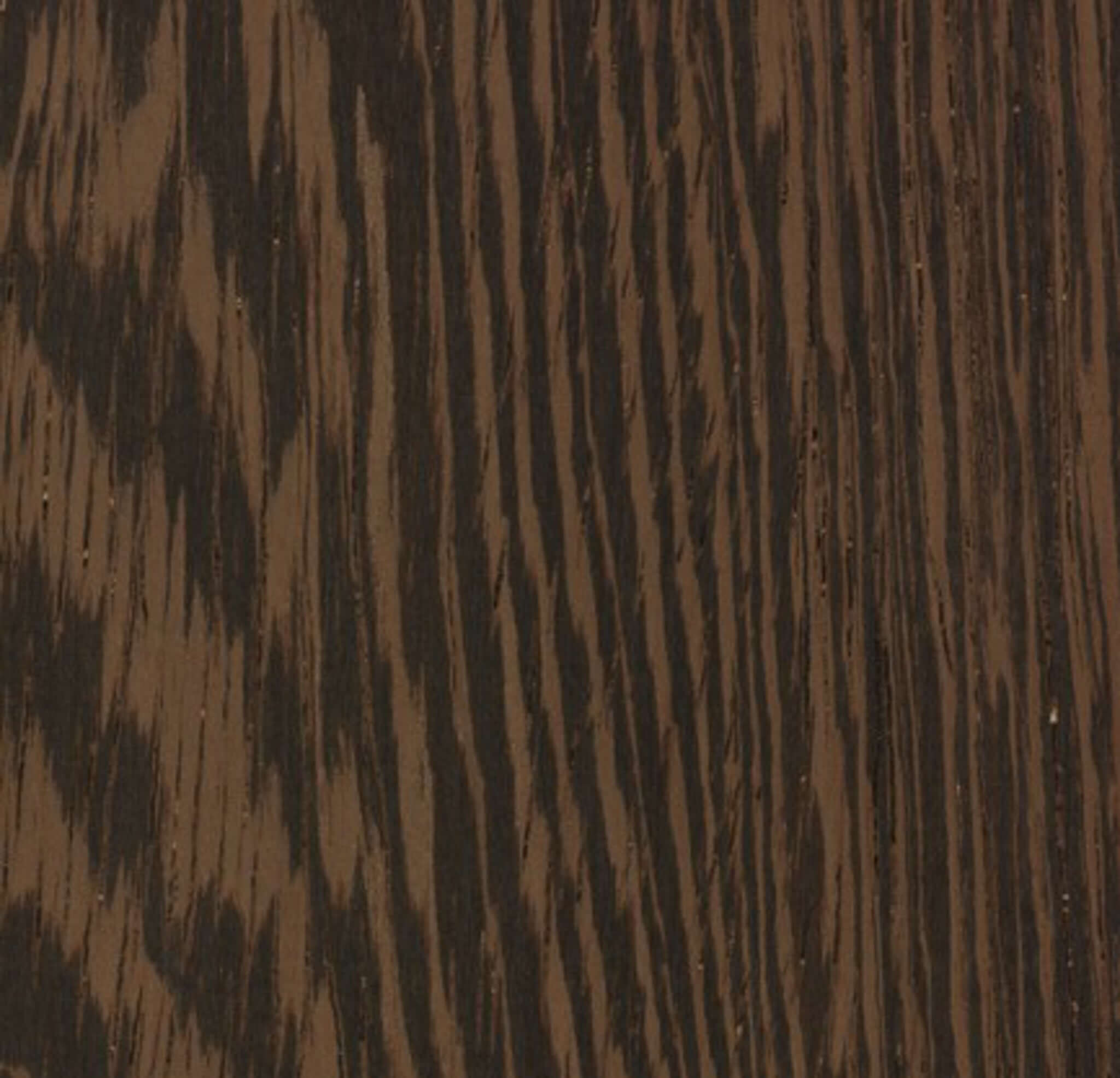
Wenge
See Wenge ProjectsAn exotic wood that is moderately hard and resistant to wear and marring. Has interesting black streaks and is near-black when finished.
- Region: Africa
- Color: Dark brown with black veins
- Tropical Hardwood
- Texture: Medium-coarse
- Grain Pattern: Straight
-
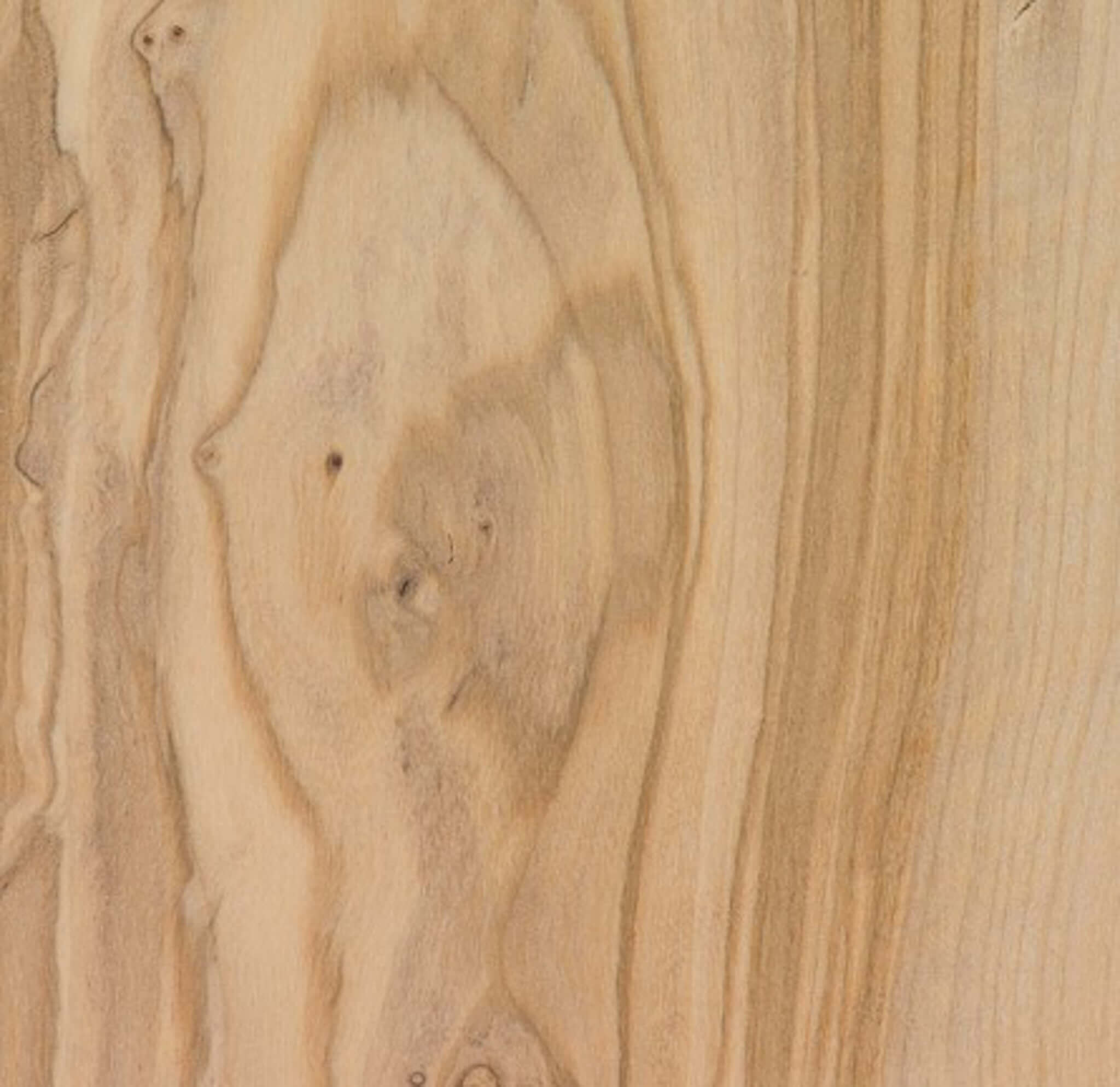
Olivewood
See Olivewood ProjectsVery popular, Olivewood hails from Europe, Africa, and the Middle East. It has religious significance to many cultures. With a striking grain pattern, it works beautifully with tools, gives off a pleasant odor, and only richens in color as it ages. Top tier!
- Region: Europe, Africa, Middle East
- Color: Tan with black, grey, brown streaks
- Temperate Hardwood
- Texture: Fine and even
- Grain Pattern: Shallow interlock
-
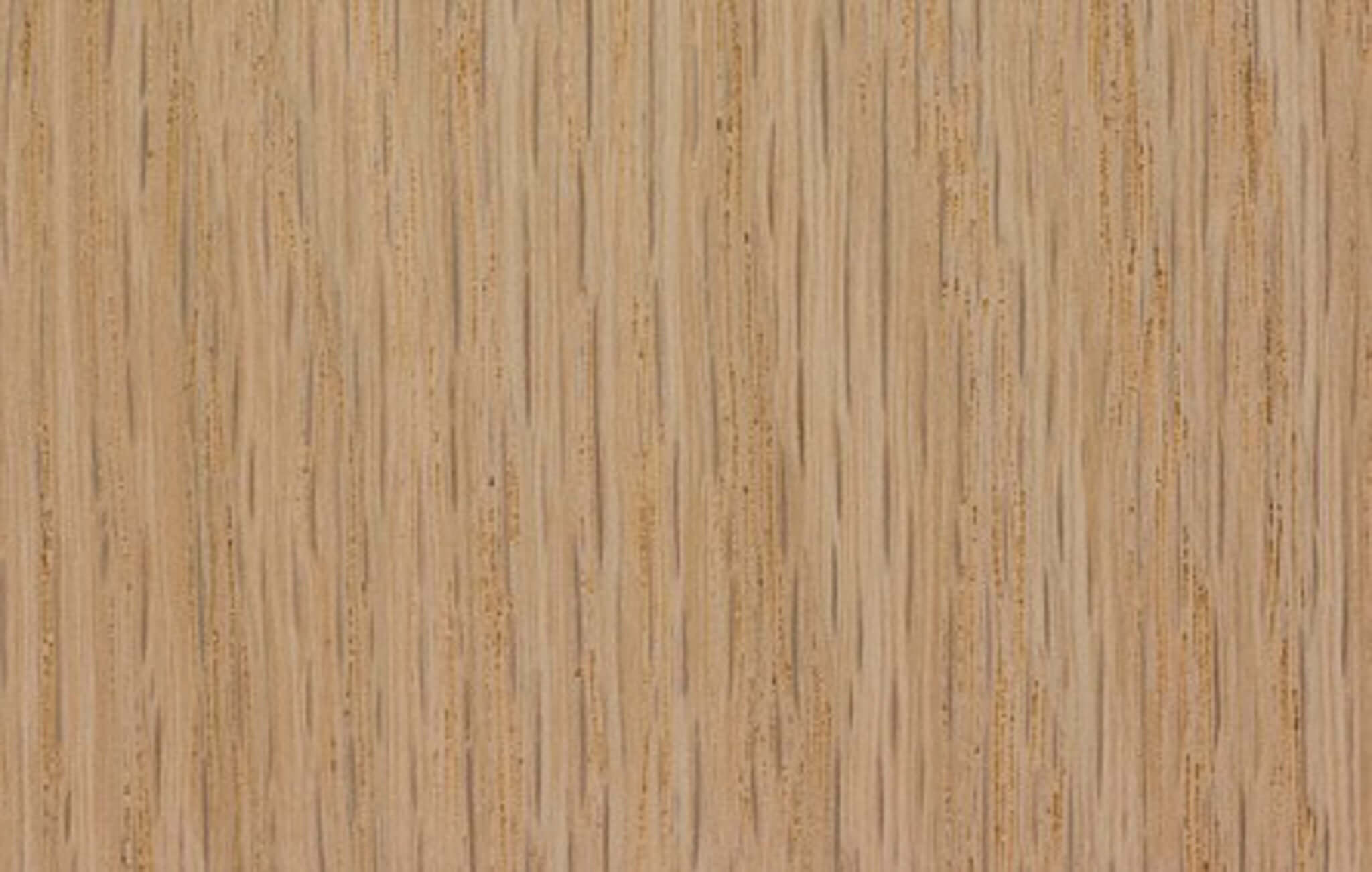
Red Oak
See Red Oak ProjectsOak is a very beautiful wood to work. It is a temperate hardwood with a coarse, open, and consistent texture. The grain is straight, and can range in color from pinkish to reddish-brown. Takes stain very well for dramatic results!
- Region: North America
- Color: Pinkish to reddish-brown
- Temperate Hardwood
- Texture: Coarse, Open
- Grain Pattern: Straight
-
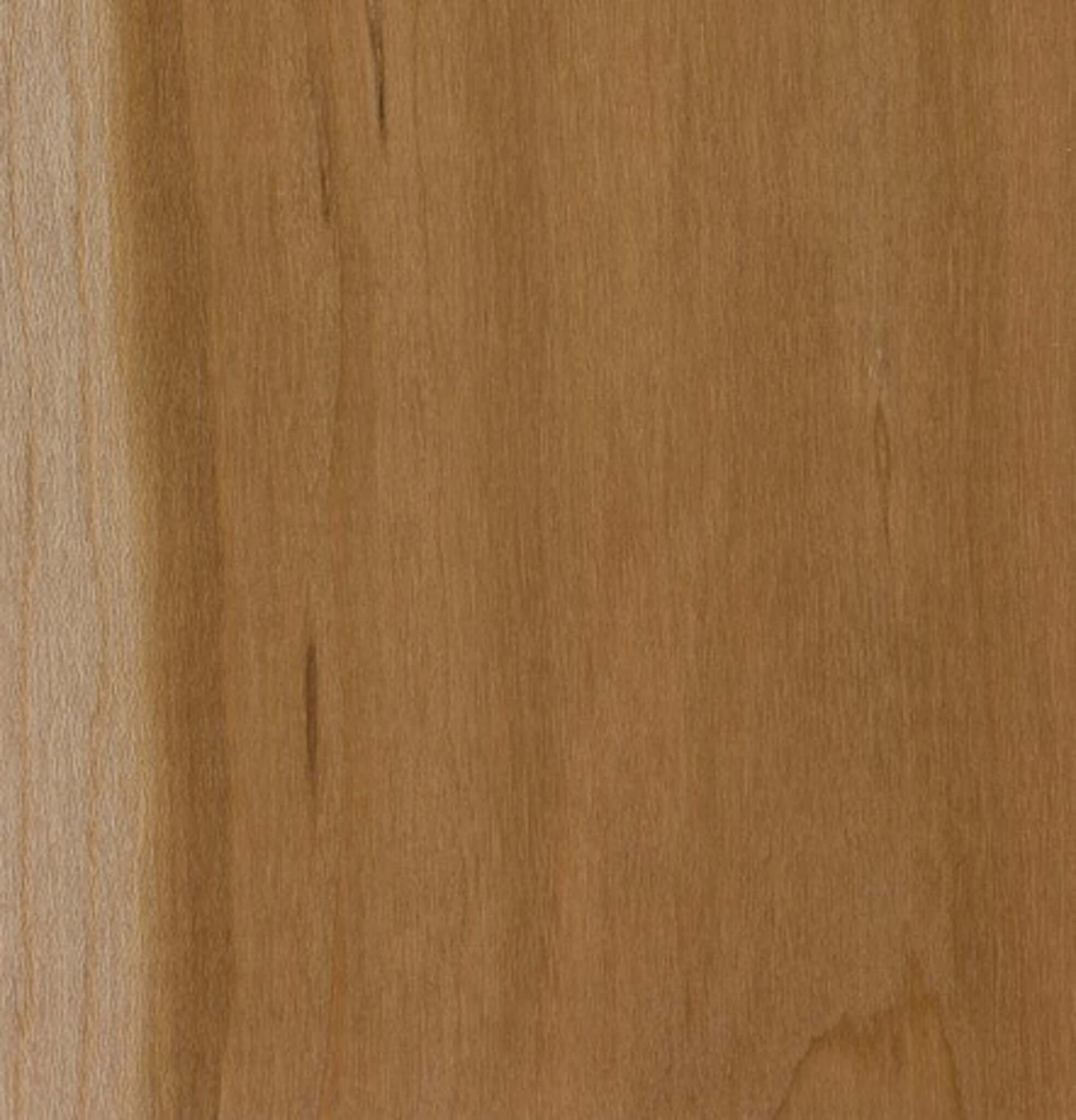
Cherry
See Cherry ProjectsA stiff and strong wood, American Black Cherry is often used for fine furniture making. It is a temperate hardwood with a fine, close, and even texture. Darkens with age.
- Region: North America
- Color: Medium red-brown
- Temperate Hardwood
- Texture: Fine, close, even
- Grain Pattern: Straight
-
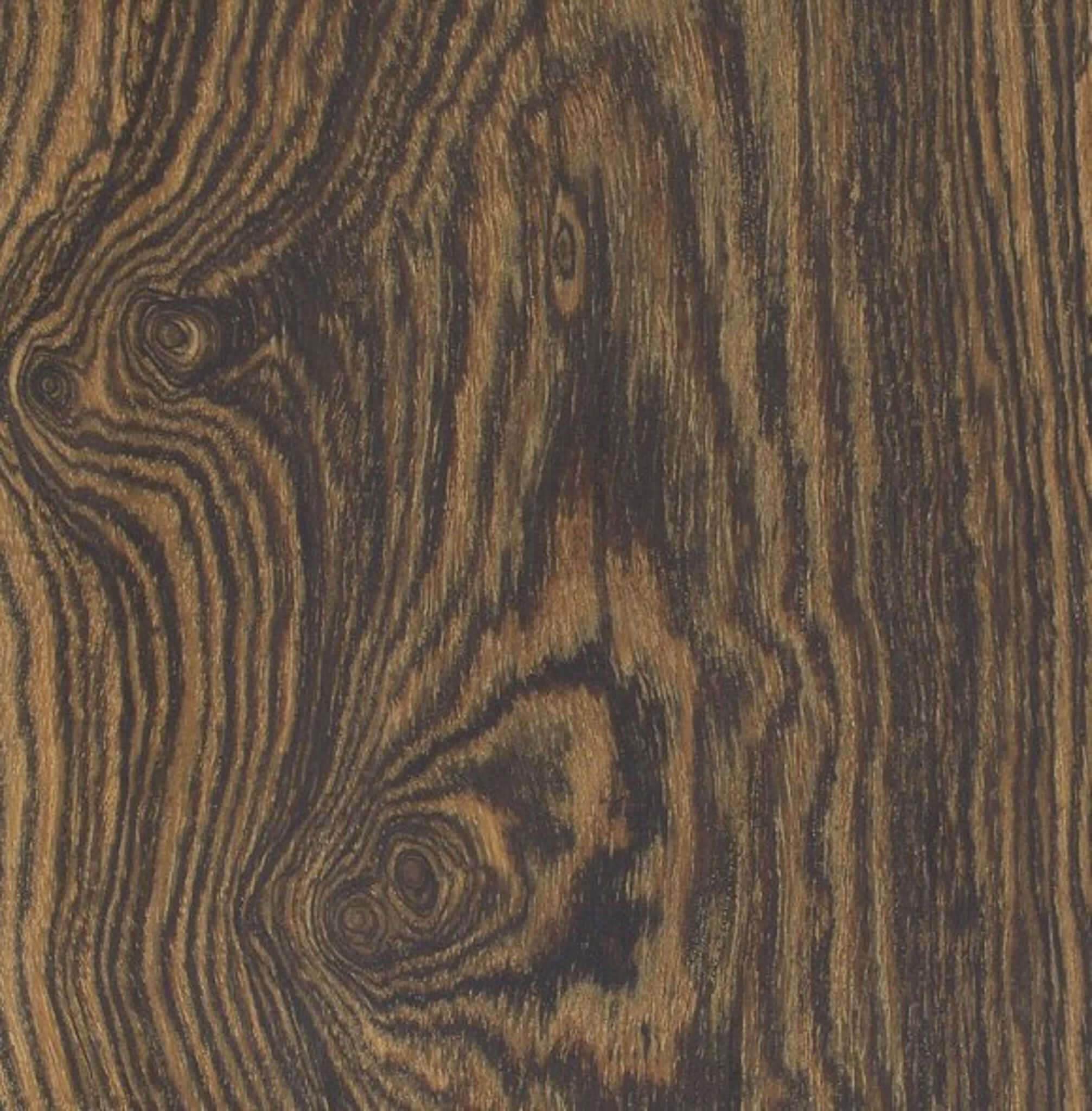
Bocote
See Bocote ProjectsAn exotic tropical hardwood. Displays a wide variety in grain from straight to completely wild! Color also varies from tan to black to golden yellow. Great for bottle stoppers and pens due to the wild grain, it smells a bit like mustard when being worked.
- Region: Central America, West Indies
- Color: Golden brown to yellow
- Tropical Hardwood
- Texture: Medium
- Grain Pattern: Wild!
-
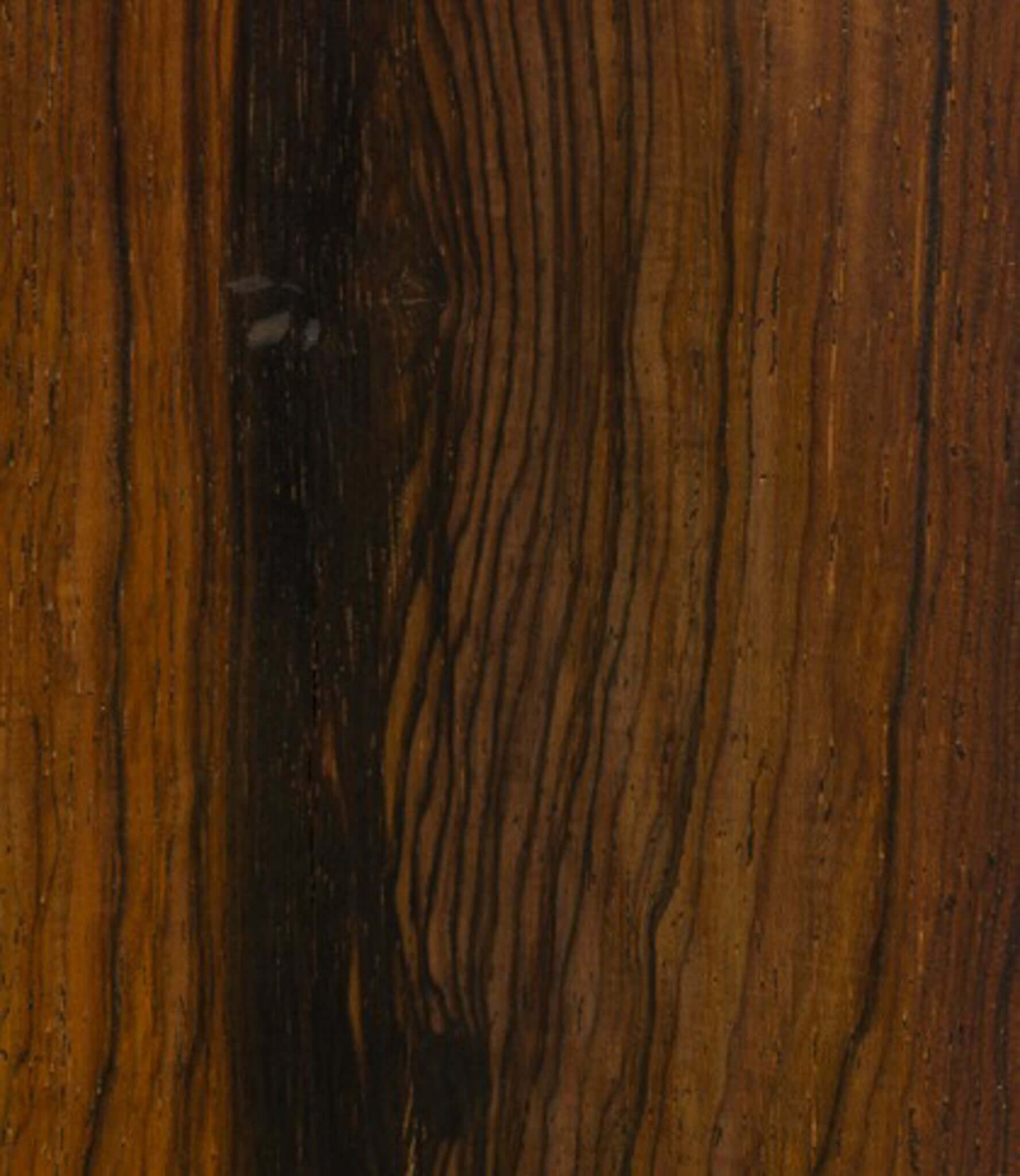
Cocobolo
See Cocobolo ProjectsAn exotic wood, Cocobolo is often used in custom pool cues. It is very durable, strong, and striking. It is fantastic to work, and finishes very smoothly with great results.
- Region: Central America
- Color: Streaks of red, orange, and yellow
- Tropical Hardwood
- Texture: Fine and even
- Grain Pattern: Irregular
-
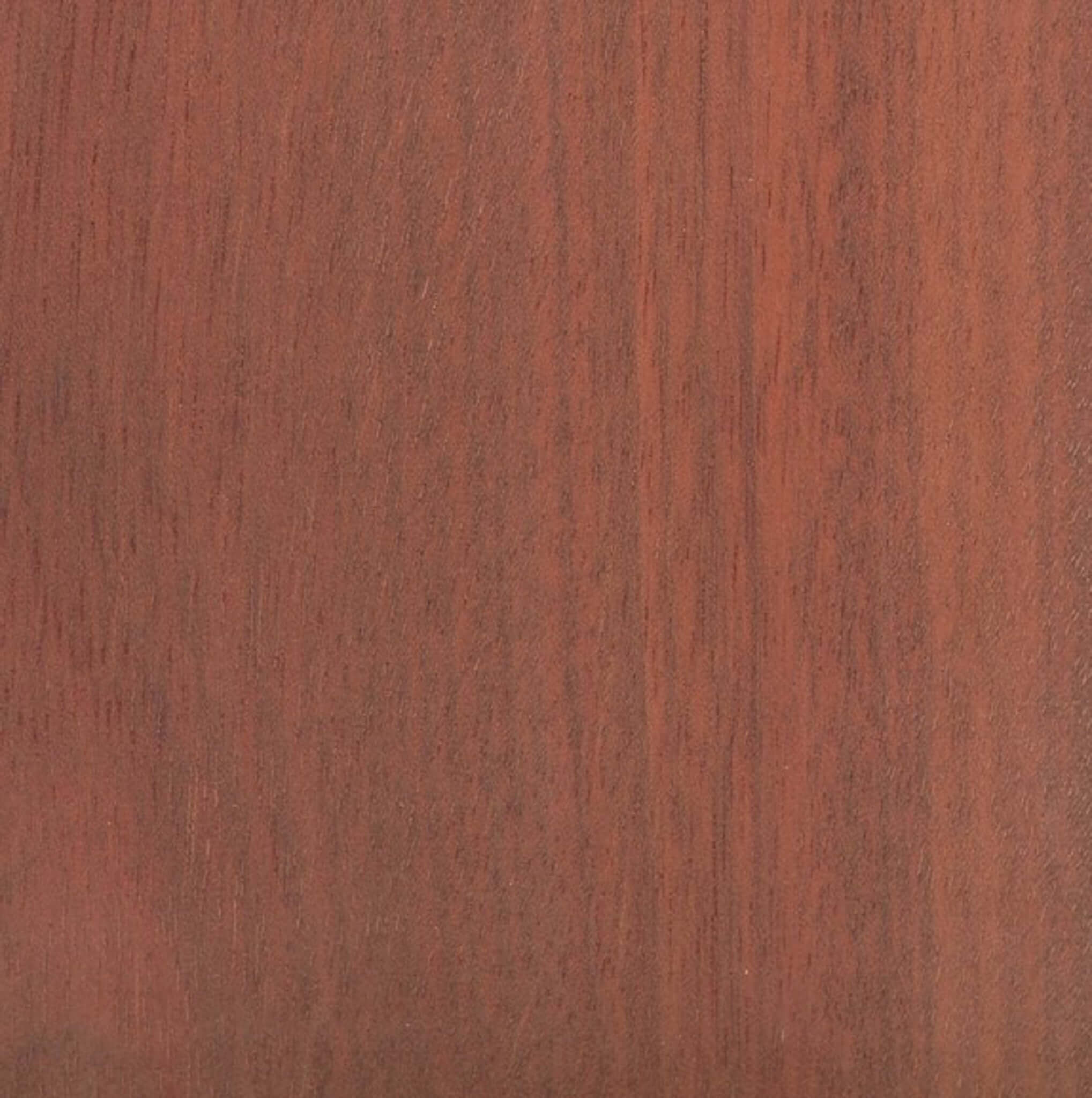
Bloodwood
See Bloodwood ProjectsDramatic name aside, Bloodwood is an exotic wood with a deep rose red color. It darkens with age, but not so much that the red color is lost. It is very dense.
- Region: South America
- Color: Deep red
- Tropical Hardwood
- Texture: Smooth and Even
- Grain Pattern: Straight
-
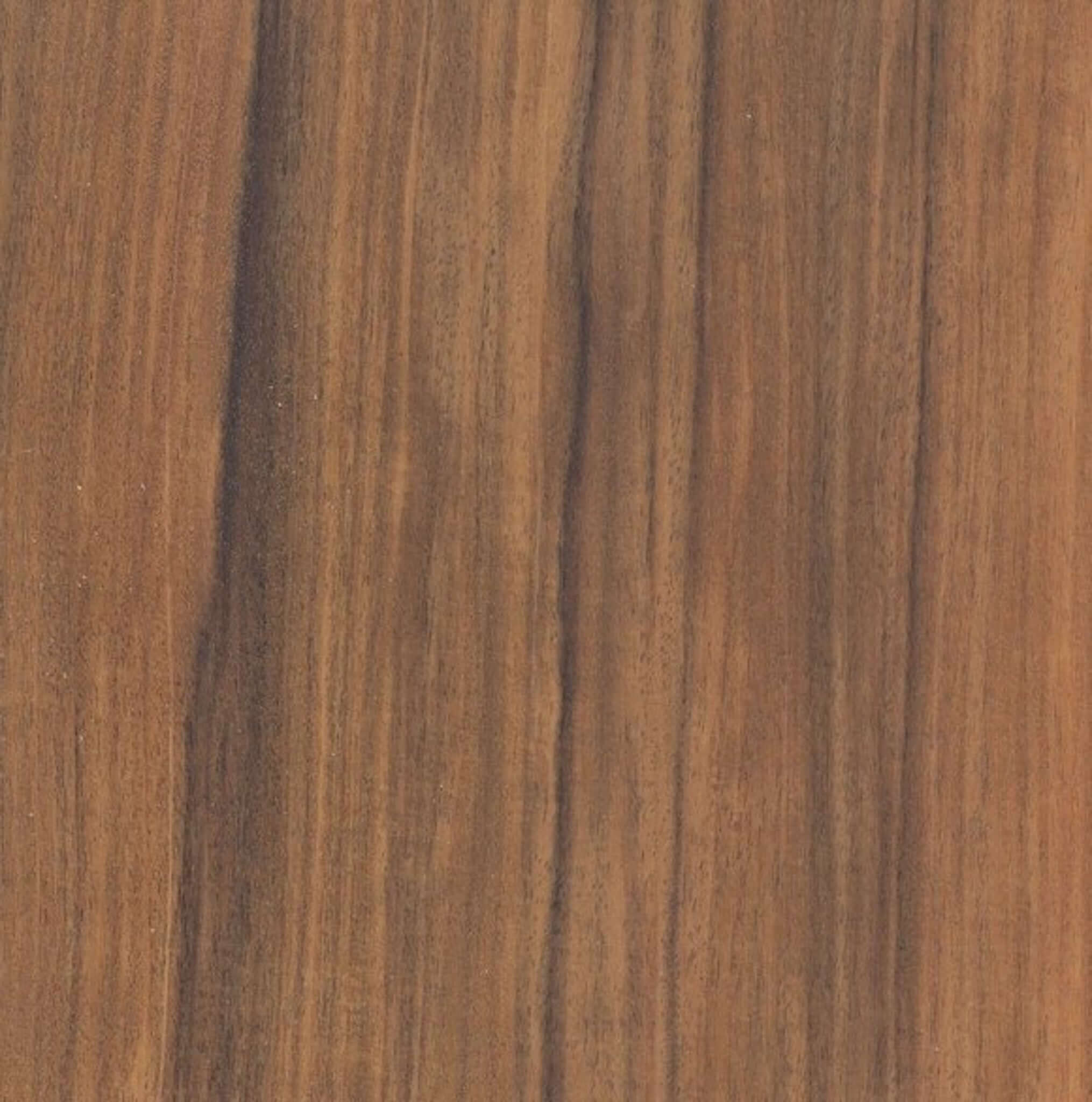
Bolivian Rosewood
See Bolivian Rosewood ProjectsAn exotic wood with dramatic black striping. It will lighten over time to enhance the black striping. Colors range from light brown to black, and almost purple!
- Region: Bolivia
- Color: Light to very dark brown
- Tropical Hardwood
- Texture: Fine and even
- Grain Pattern: Slightly wavy
-
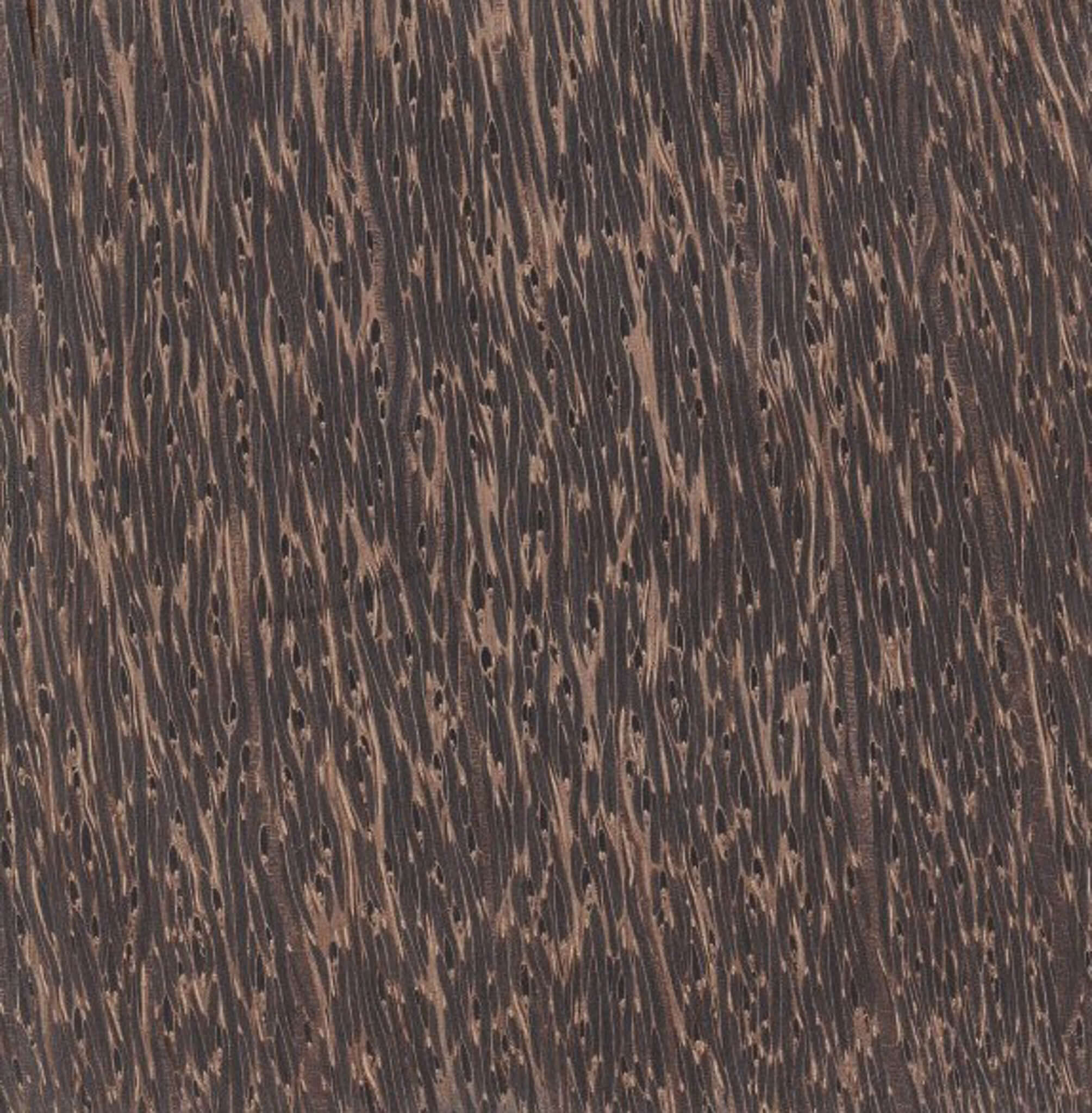
Black Palm
See Black Palm ProjectsThis "tree" is actually in the grass family! Black palm is essentially a series of grass fibers held together with a natural glue. It is very difficult to work and often needs to be stabilized prior to turning. Once turned and polished, it is almost black.
- Region: Southeast Asia
- Color: Rich brown with pale streaks
- Tropical Hardwood
- Texture: Coarse
- Grain Pattern: Coarse and open
-
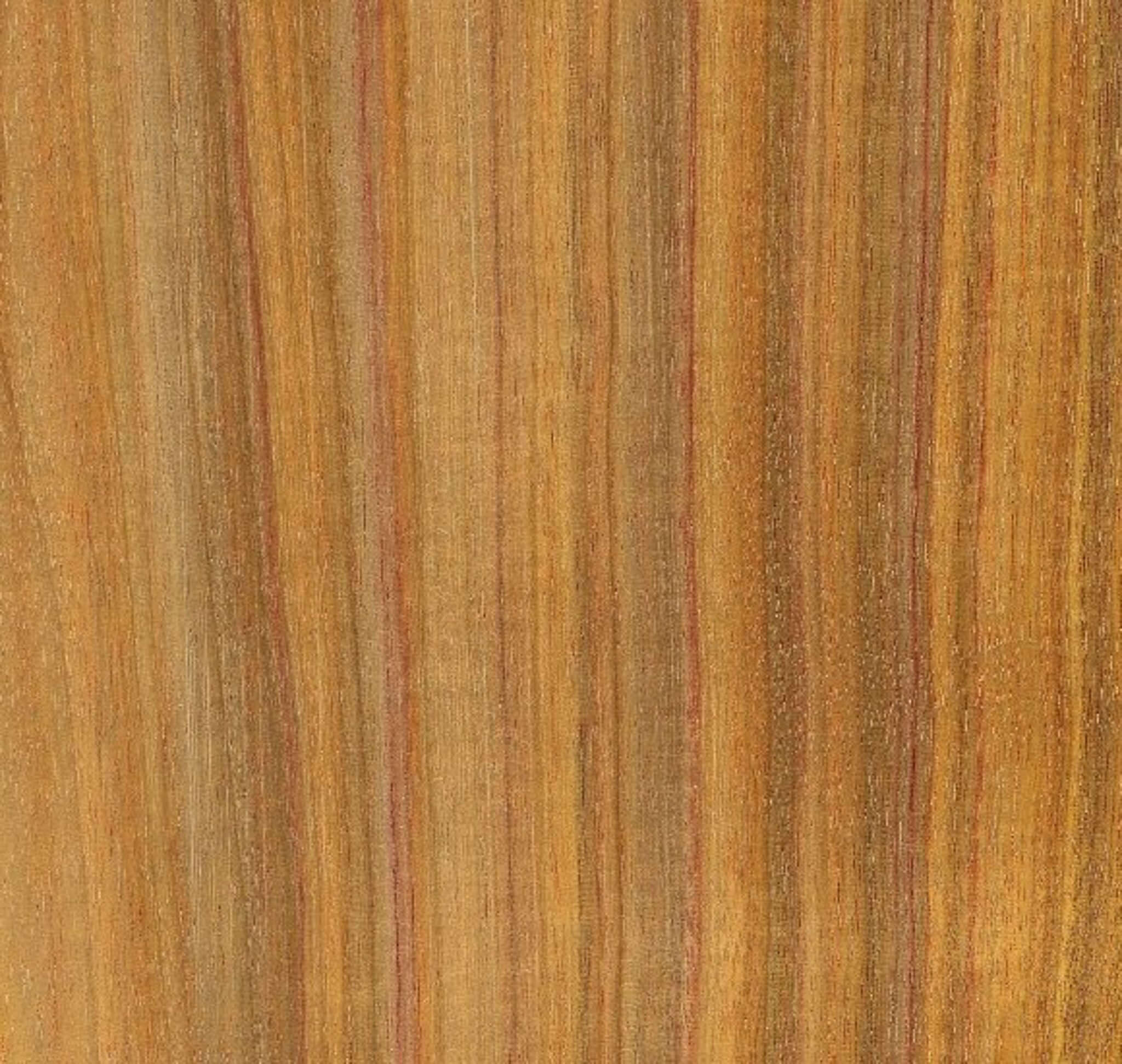
Canarywood
See Canarywood ProjectsAn exotic wood that is yellow to orange in color. Can exhibit light red streaking. Works very easily and finishes smoothly.
- Region: South America
- Color: Clear yellow to tan
- Temperate Hardwood
- Texture: Fine and Even
- Grain Pattern: Straight
-
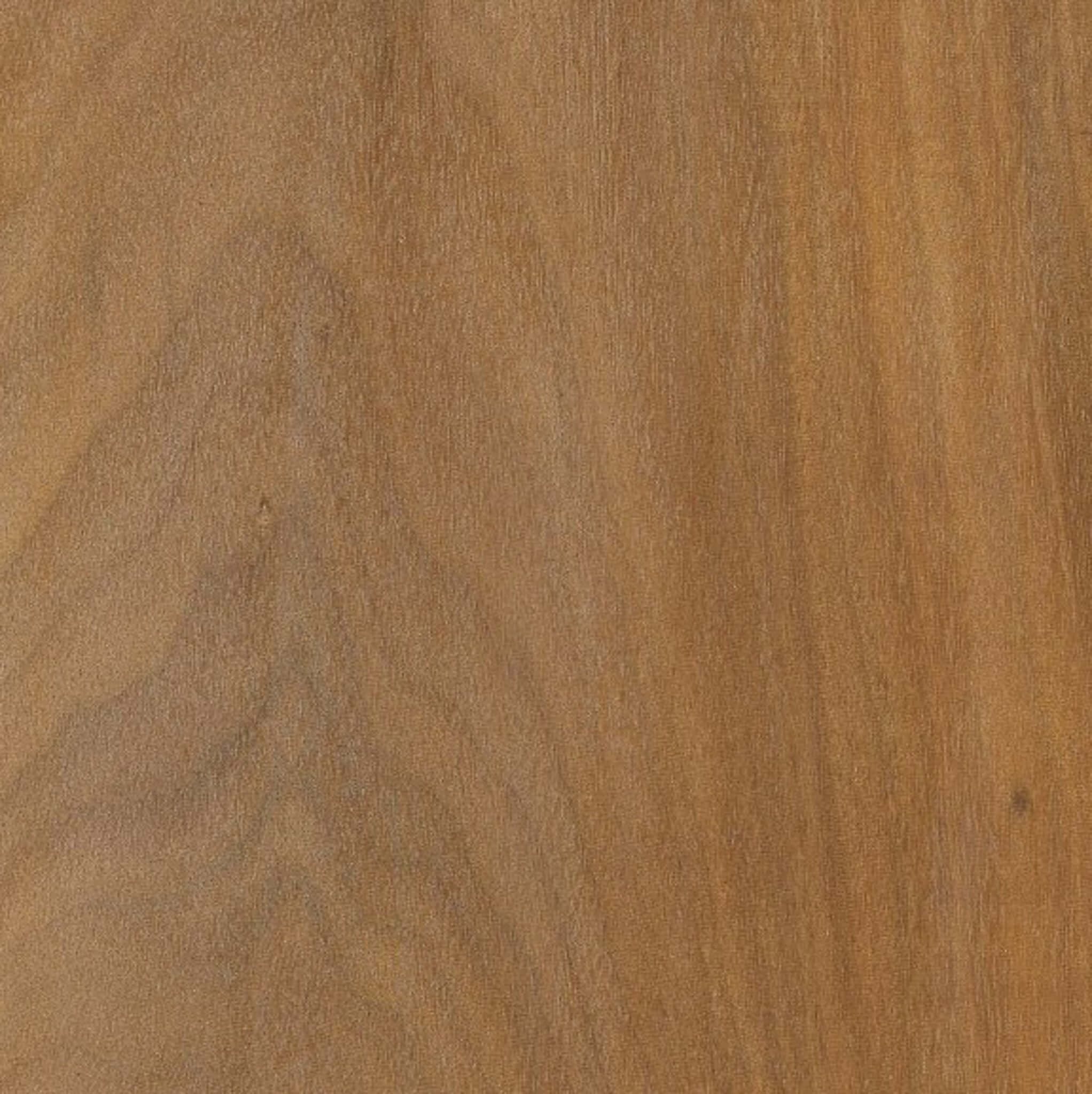
Chakte Viga
See Chakte Viga ProjectsA tropical hardwood from Mexico, Chakte Viga can vary from pale to rich-reddish orange. The wood can darken with exposure to light.
- Region: Mexico
- Color: Light to dark orange
- Tropical Hardwood
- Texture: Medium to fine
- Grain Pattern: Straight
-
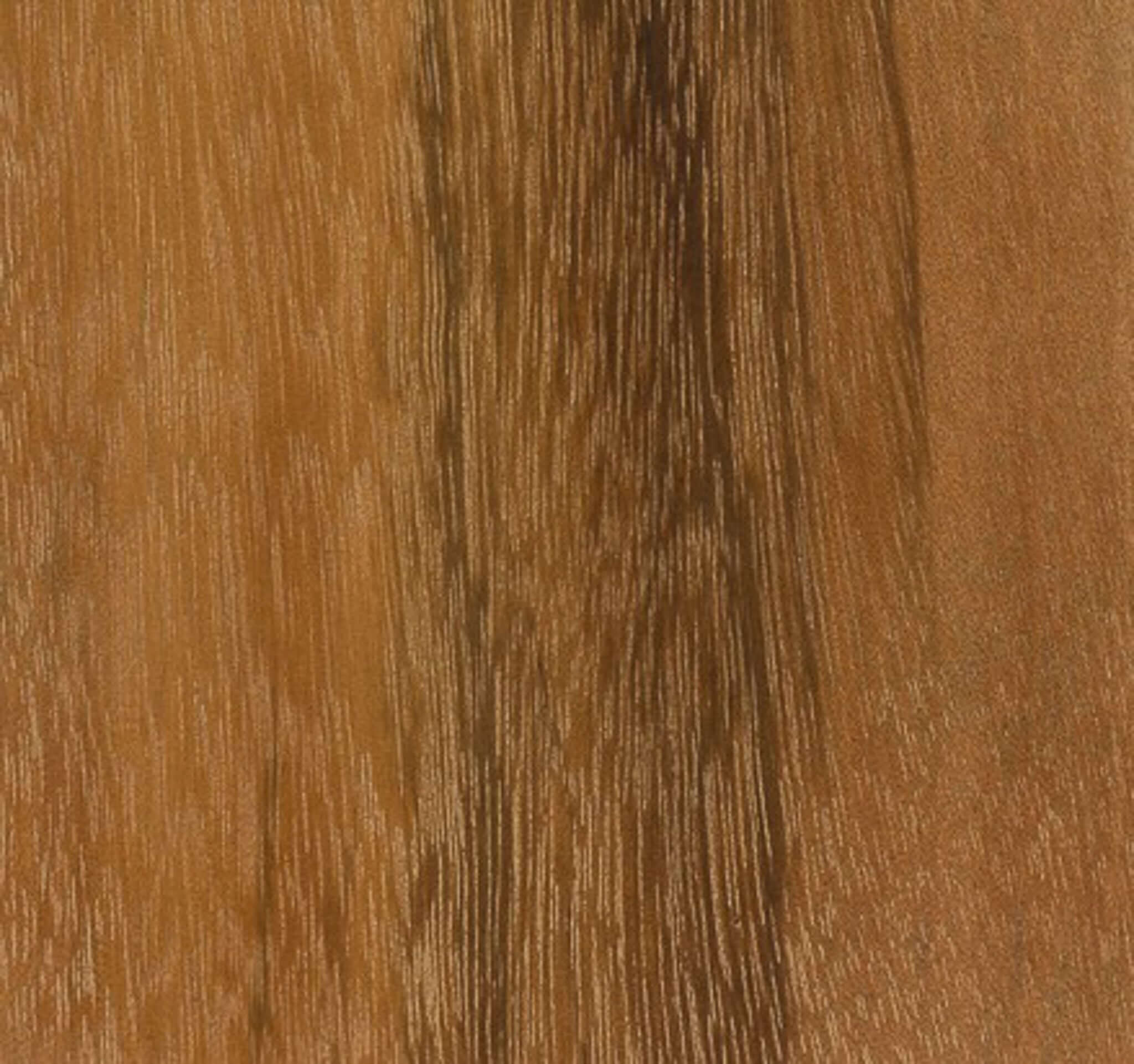
Goncalo Alves
See Goncalo Alves ProjectsA tropical hardwood from South America, Goncalo Alves ranges in color from light to deep reddish-brown. Very hard and naturally rot-resistant.
- Region: South America
- Color: Light to reddish-brown
- Tropical Hardwood
- Texture: Fine to medium
- Grain Pattern: Straight
-
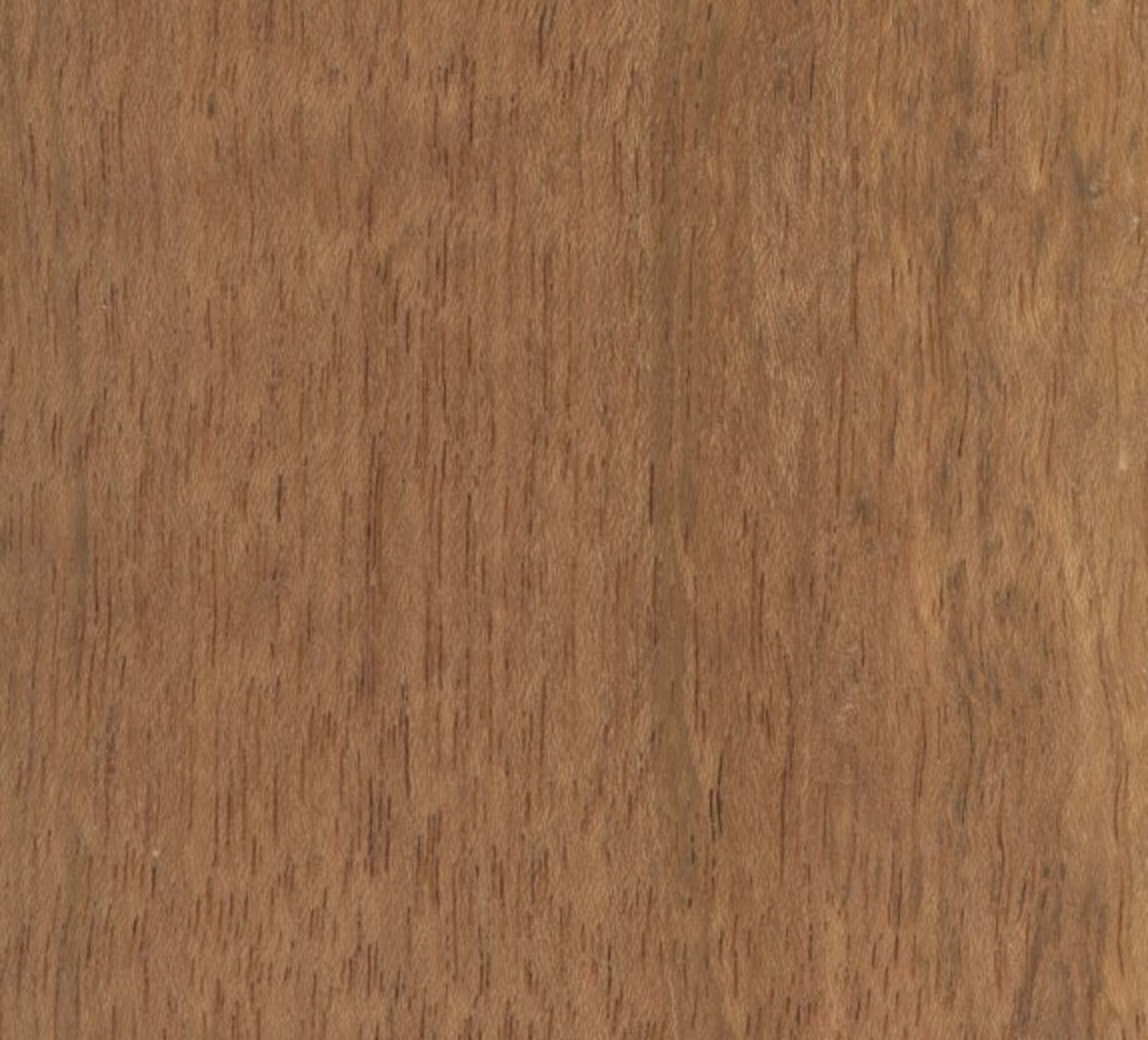
Jatoba
See Jatoba ProjectsJatoba is an exotic wood that ranges from salmon-red to orange-brown. It will darken after drying, and often has dark streaks. We often use it in cutting boards.
- Region: South/Central America
- Color: Salmon-red to Orange Brown
- Tropical Hardwood
- Texture: Medium to Coarse
- Grain Pattern: Interlocked
-
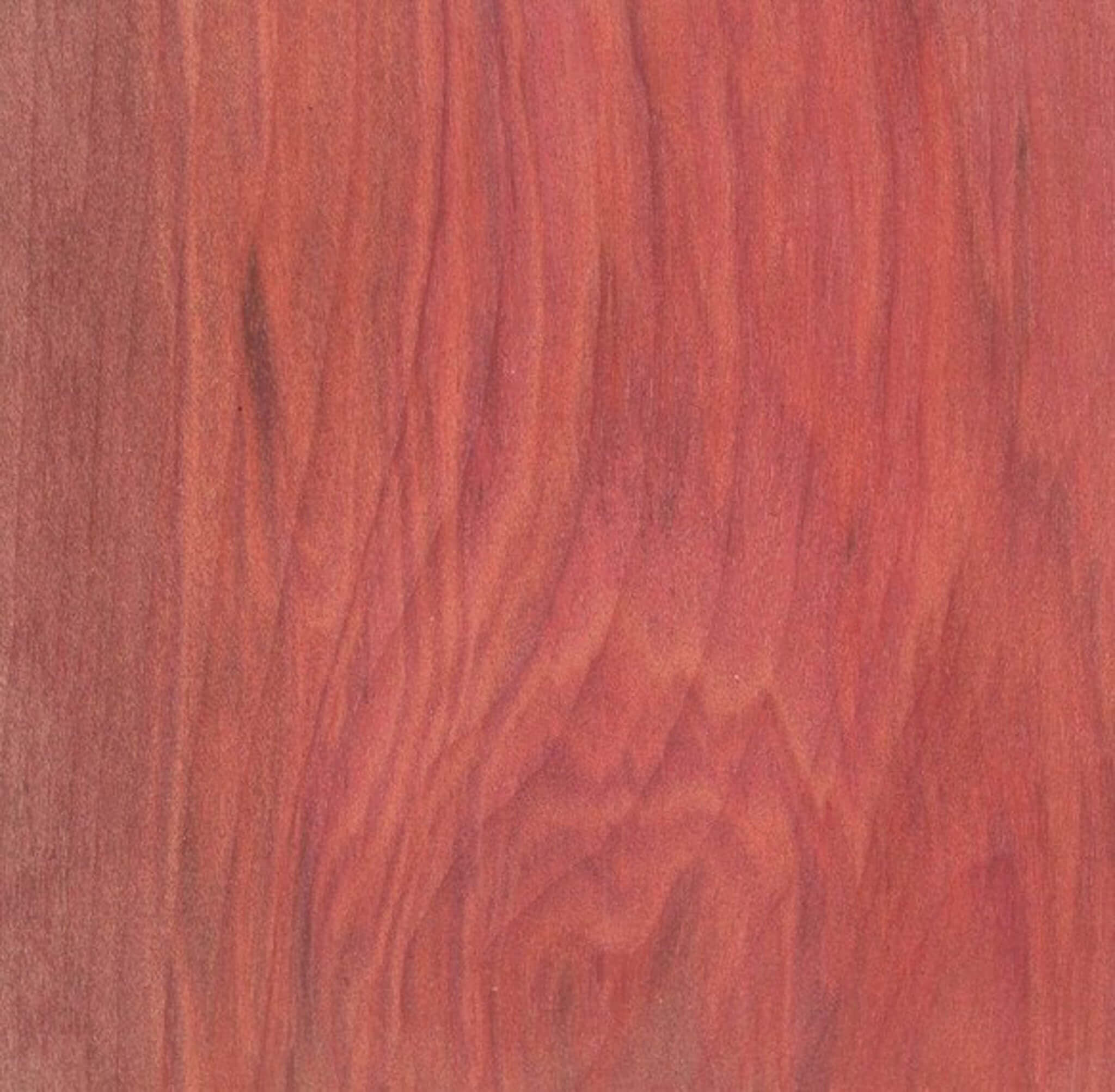
Redheart
See Redheart ProjectsAn exotic wood with dull pink to moderately bright red coloring. Can fade considerably if exposed continuously to UV light. With a very fine texture, it works beautifully with tools and smells nice too!
- Region: Central America
- Color: Red
- Tropical Hardwood
- Texture: Fine to medium
- Grain Pattern: Straight to wavy
-
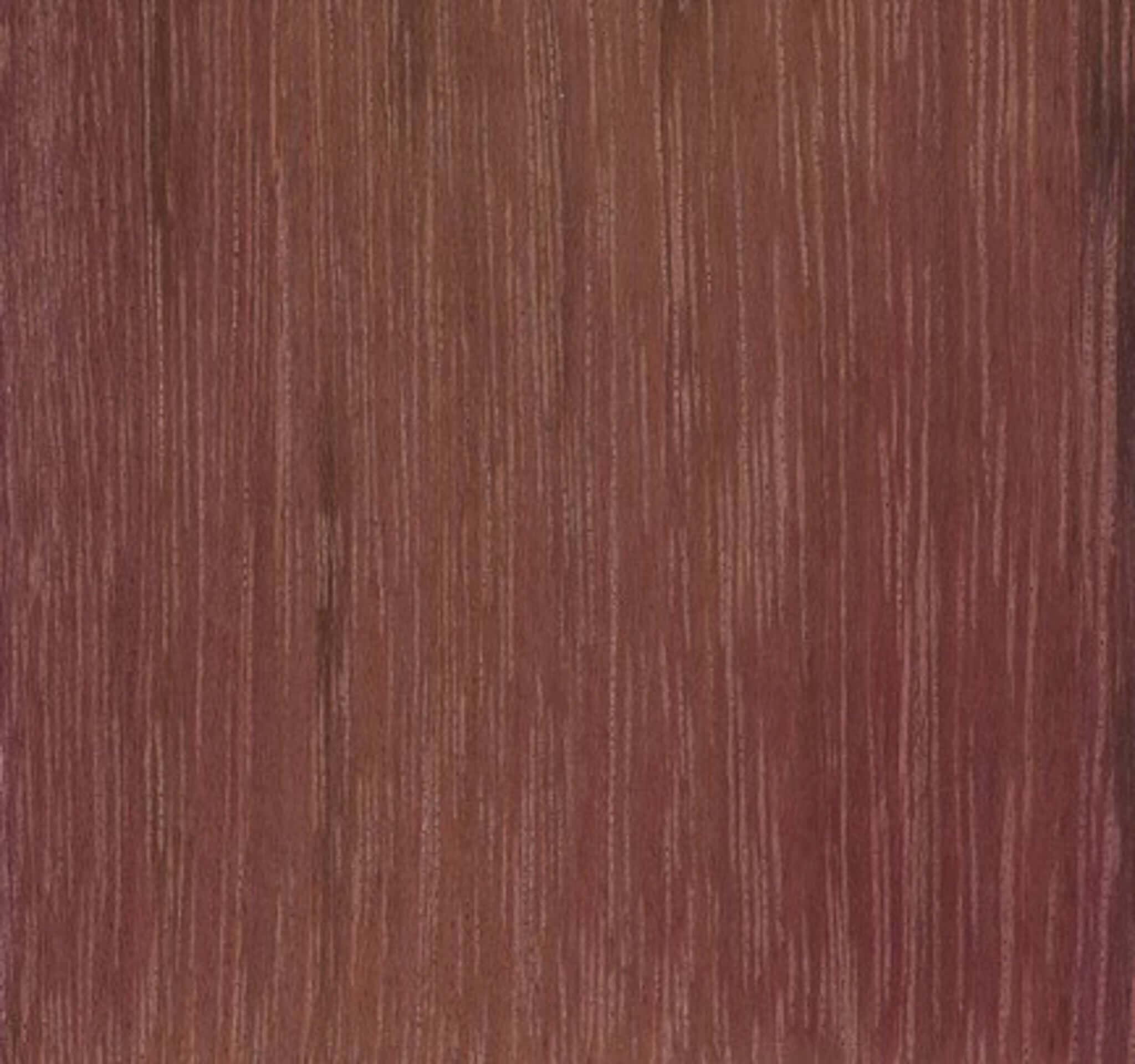
Purpleheart
See Purpleheart ProjectsAn exotic wood that is very hard and heavy, purpleheart is a striking purple color! When freshly cut, is is dull brown, but with light and time it will turn purple again. With age and light exposure, it will continue to darken.
- Region: Central and South America
- Color: Purple
- Tropical Hardwood
- Texture: Moderate
- Grain Pattern: Straight to wavy
-
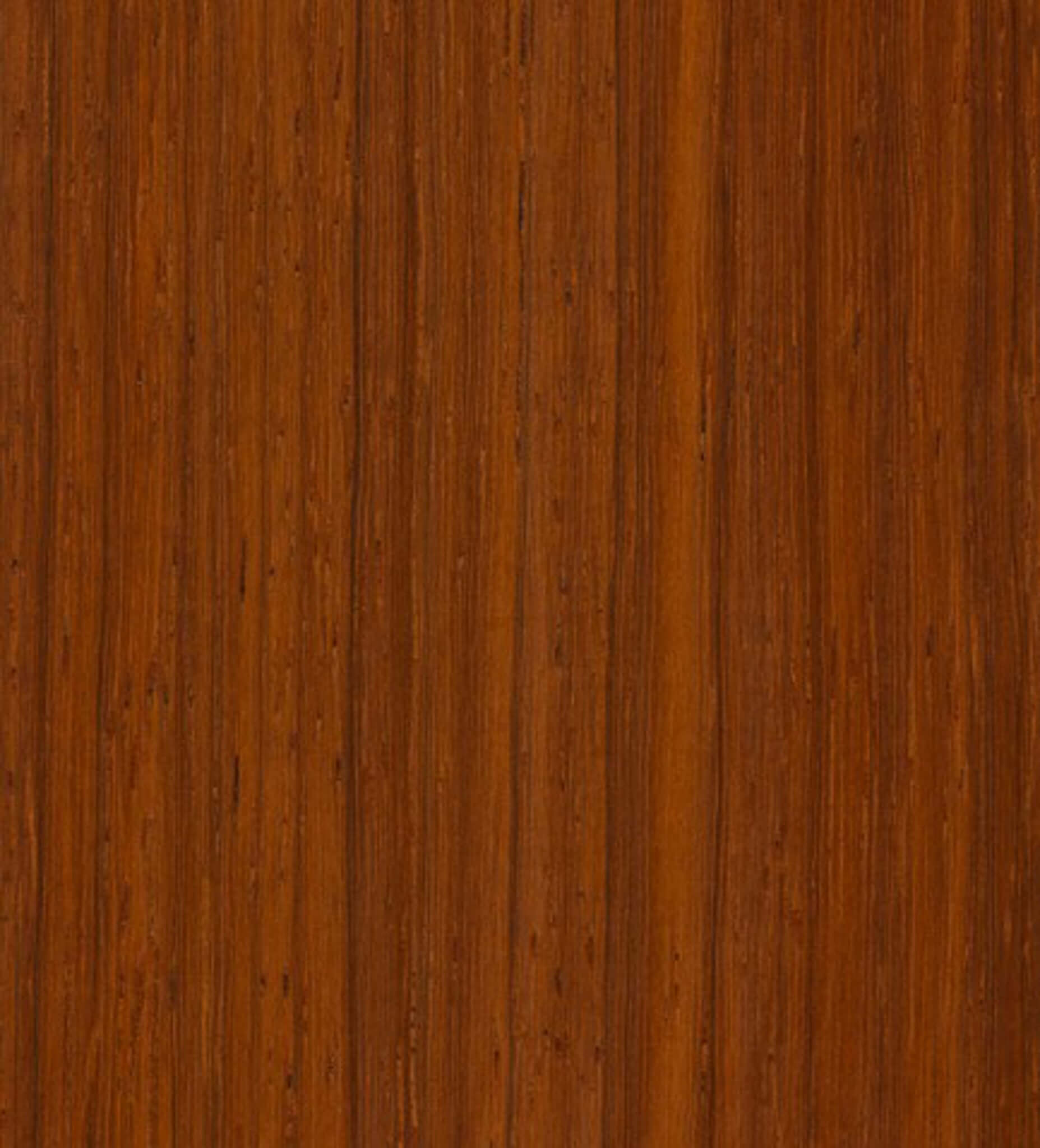
Padauk
See Padauk ProjectsAn exotic wood that is bright orange or almost crimson when freshly cut but oxidizes over time to a richer purple-brown. Makes a great accent wood in smaller projects - an all-around good wood.
- Region: West Africa
- Color: Red, darkening to purple-brown
- Tropical Hardwood
- Texture: Coarse
- Grain Pattern: Straight, slightly wavy
-
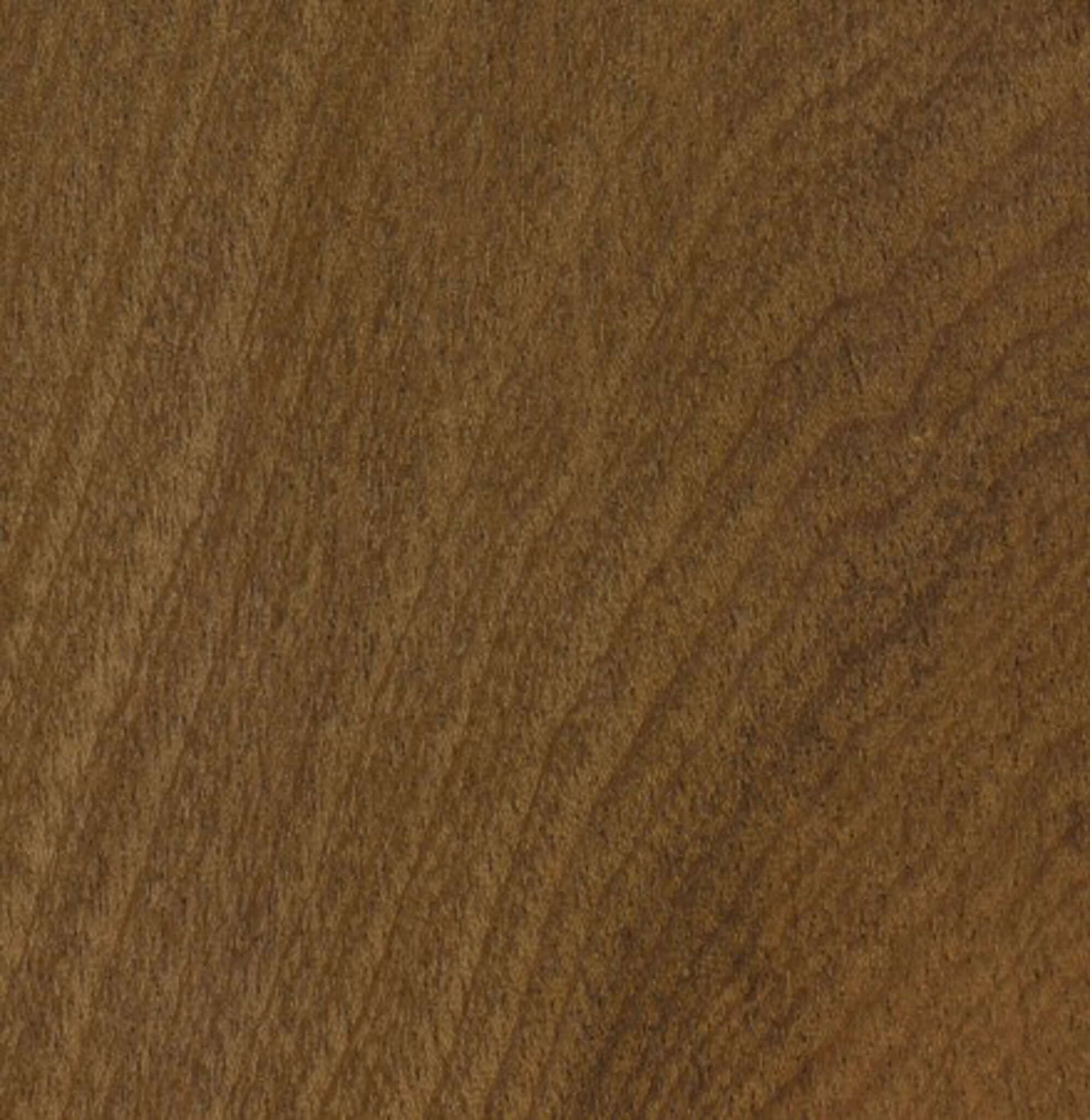
Sapele
See Sapele ProjectsAn exotic wood from Africa, it can be used as a utility substitute for Mahogany. It can be difficult to work with, but finishes well and is popular with instrument makers.
- Region: Africa
- Color: Medium red-brown
- Tropical Hardwood
- Texture: Fine to medium
- Grain Pattern: Wavy, figured
-
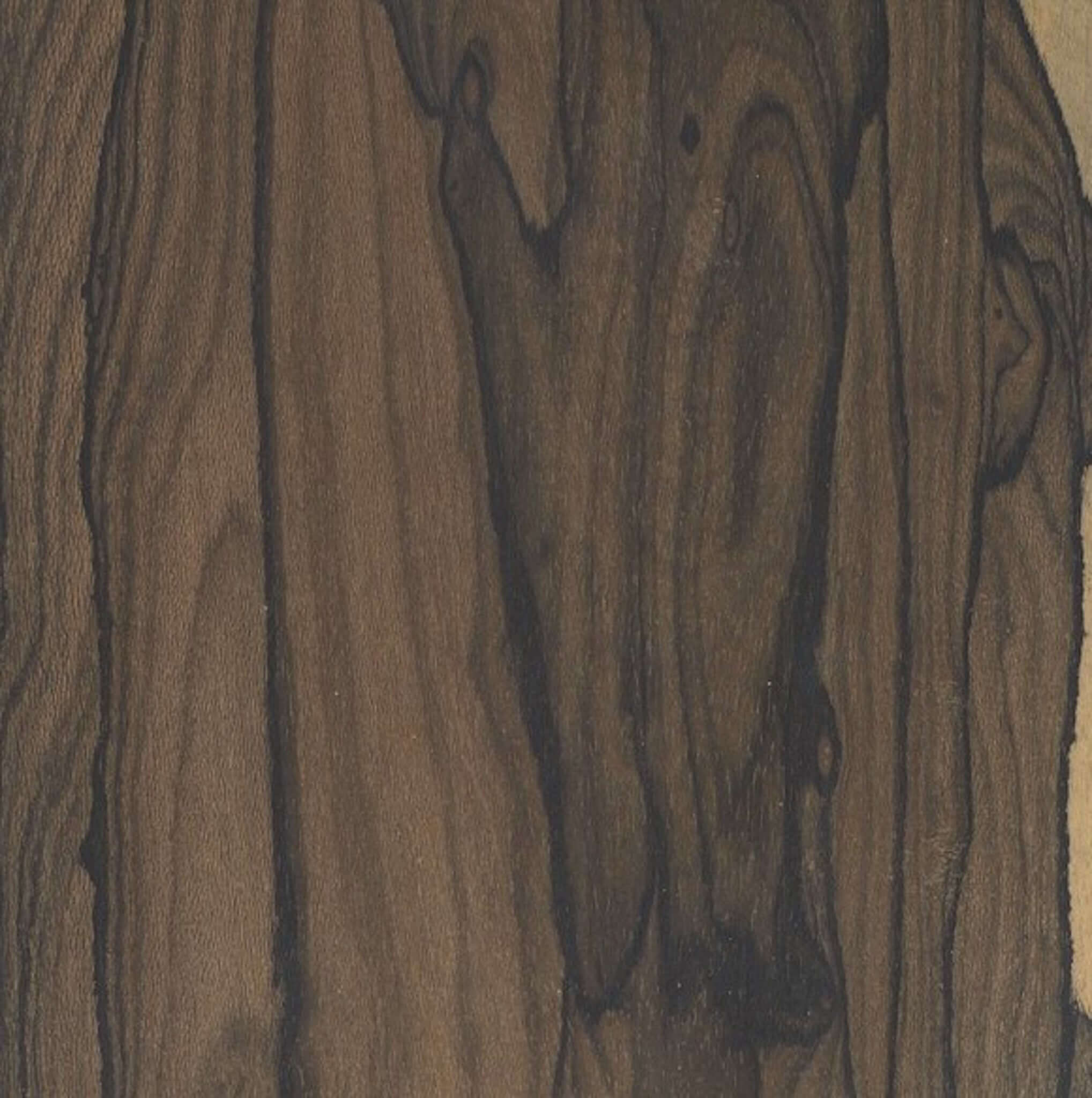
Ziricote
See Ziricote ProjectsAn exotic wood, Ziricote is hard, dense, and dark. It displays neat black streaking and works well. Takes a high polish and luster and is great for wood turning.
- Region: Central America
- Color: Dark brown with Black Streaks
- Tropical Hardwood
- Texture: Medium
- Grain Pattern: Straight or interlocked
-
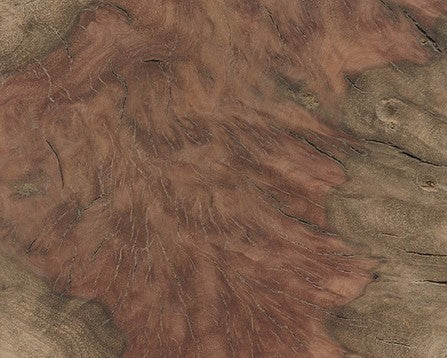
Mallee
See Mallee ProjectsMallee is a species of Eucalyptus natigve to Australia. Different species of Eucalyptus yield Red or Brown Mallee. Mallee burl is harvested from medium-to-small trees that are sometimes considered shrubs. Can have beautiful figuring, and makes excellent pens and bottlestoppers.
- Region: Australia
- Color: Red to Brown
- Southern Temperate
- Texture: Medium to Coarse
- Grain Pattern: Straight to interlocked
-
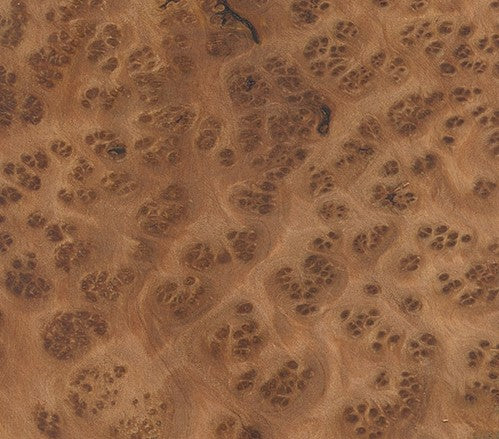
Thuya
See Thuya ProjectsAn exotic wood from Morocco, Thuya smells great when being worked due to its oil content; the oil can be extracted and is used in religious ceremonies. Thuya normally has beautiful "eyes" present in the wood, and is an excellent wood for turning projects and special keepsakes. Care must be taken as sometimes it can be brittle.
- Region: Morocco
- Color: Rich Golden-Brown
- Tropical Hardwood
- Texture: Fine to Medium
- Grain Pattern: Interlocked, Fine
-
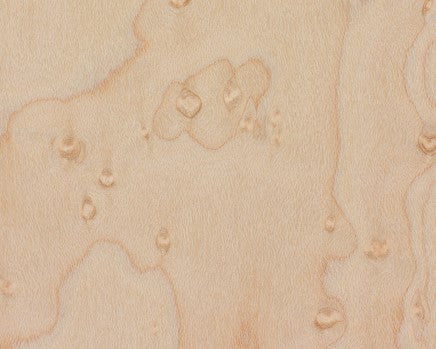
Figured, Curly, Quilted, Tiger, Burl, Birdseye, and Spalted Wood
See Figured ProjectsNot a species of wood, but more of a description of the grain pattern of a wood. If wood has been attacked by insects, fungus, or disease, or just grown in a funny way, it may exhibit one of these patterns. Prized for woodturning, these types of wood can be difficult to work but yield fantastic results.























